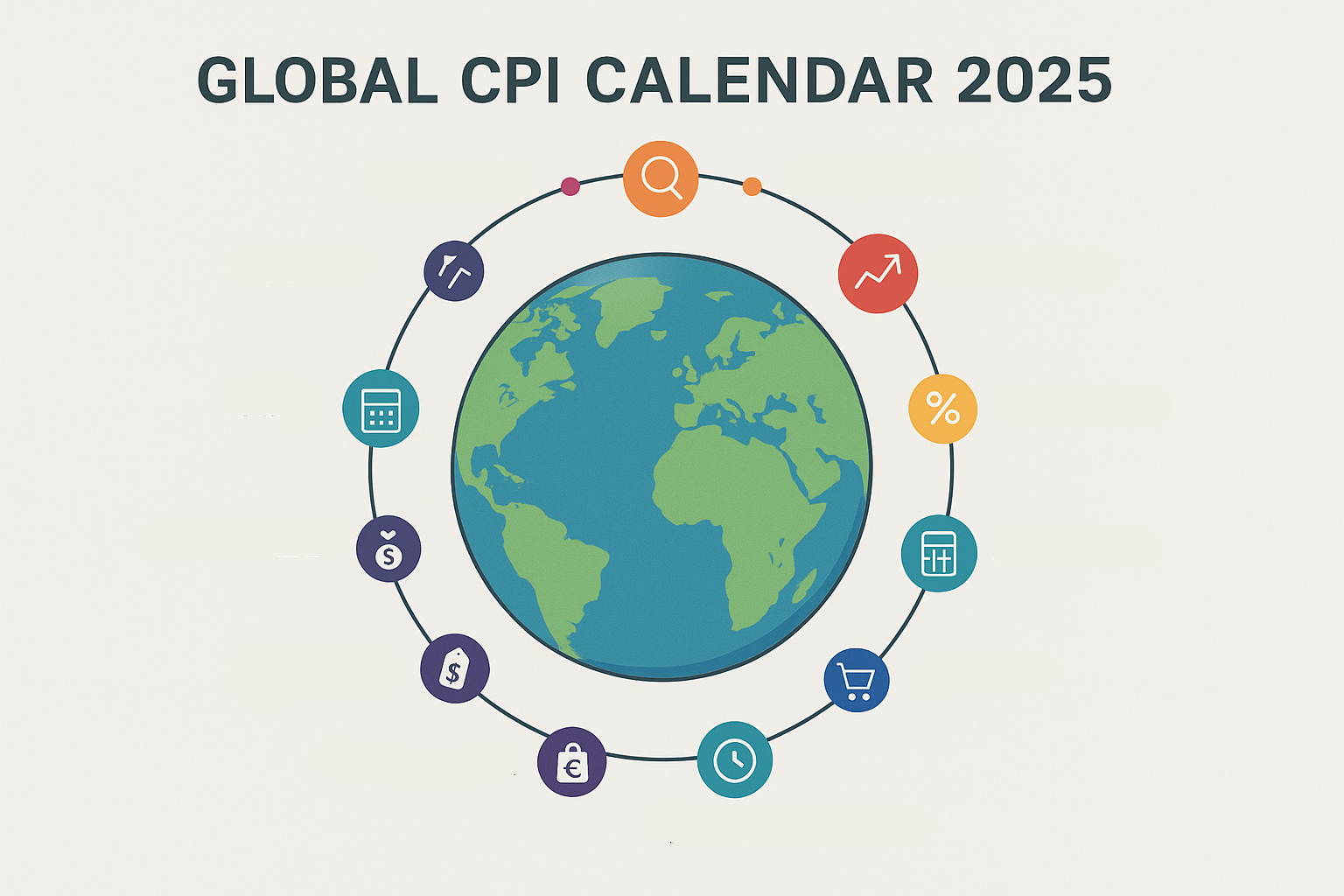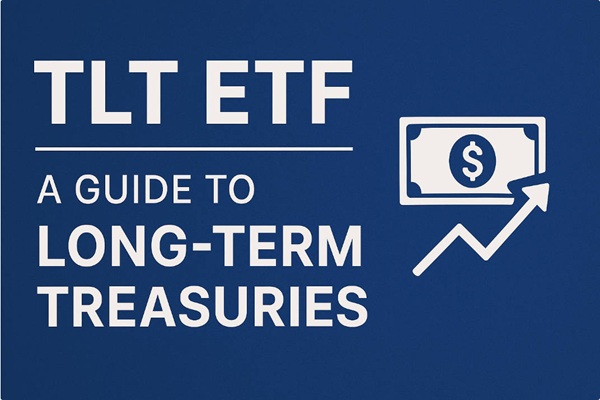The Consumer Price Index (CPI) is one of the most closely watched economic indicators worldwide. In 2025, traders, investors, and policymakers are increasingly monitoring CPI releases from the United States, Eurozone, OECD, China, Japan, India, and Australia to assess inflation trends and predict central bank actions.
Here's the quick answer:
U.S. CPI is released monthly, typically around the middle of the month at 8:30 a.m. ET.
Eurozone flash CPI are published at month-end, with the definitive reading occurring in the middle of the month.
The OECD aggregate CPI was last updated on August 5, 2025.
China, Japan, India, and Australia publish CPI monthly, typically in the second or third week of the following month.
This article provides the full 2025 global CPI release schedule, highlights the most market-moving dates, and explains how investors can use this calendar to prepare for inflation-driven volatility.
When Are the Upcoming US CPI Release Dates 2025?
The U.S. Bureau of Labour Statistics (BLS) follows a consistent schedule, releasing CPI data mid-month, around 8:30 a.m. ET. Here's the remaining lineup for 2025:
| Reference Month |
Release Date (ET) |
| August 2025 |
September 11, 2025 (Thu) 8:30 |
| September 2025 |
October 15, 2025 (Wed) 8:30 |
| October 2025 |
November 13, 2025 (Thu) 8:30 |
| November 2025 |
December 10, 2025 (Wed) 8:30 |
What to watch: The August CPI, released September 11, 2025, showed headline inflation holding steady at 2.7% year-over-year, just below expectations, reinforcing rate-cut optimism. Core CPI also ticked up to 3.1%, the fastest increase since January.
Upcoming Global CPI Calendar 2025: Eurozone, OECD, China, Australia, and India

1) Eurozone (Flash & Final CPI / HICP)
For the Eurozone, Eurostat issues flash inflation estimates typically around the 23rd to 25th of each month, followed by final CPI figures about two weeks later, though exact dates vary per country. (European Commission)
Flash HICP Estimate: Released on the 2nd of each month (at 12:00 CET); for example:
Final HICP data: Typically published around the 17th of the month (at 12:00 CET). For August, that's 17 September 2025
2) OECD (Aggregate CPI)
The OECD publishes aggregate CPI data encompassing major economies. The next confirmed release is on 8 September 2025, with further releases typically following on a monthly or quarterly basis.
3) Australia (Monthly + Quarterly CPI)
Australia introduced a full monthly CPI series starting 26 November 2025, then on the last Wednesday of each subsequent month.
Quarterly CPI schedule continues alongside:
4) China
Inflation (CPI) data revisions occur monthly, though official timing is not publicly standardised. For example, June 2025 saw CPI rise 0.1% YoY, reversing prior declines.
5) Japan (National CPI YoY)
Published near the end of each month, for example:
6) India (MoSPI CPI)
India provides CPI data through its Ministry of Statistics, scheduled around the 12th of each month (or the next working day), such as:
How Traders and Investors Use This CPI Schedule Effectively?
1. Market Impact Anticipation
Markets react most to surprise CPI readings vs expectations. U.S. CPI under 2.7% boosted rate-cut bets; in contrast, higher core inflation raises hawkish concerns.
2. Global Diversification Insight
Tracking the Eurozone, Australia, India, and OECD helps gauge global inflation synchronisation. If global CPI continues to moderate, pressure mounts on central banks to pivot toward easing.
3. Regional Timing Matters
Different time zones mean CPI releases stagger across global markets, with the U.S. at 8:30 a.m. ET, Asia/Europe releases tend to occur during midday local time. Trading strategies should reflect these timing windows.
4. Watch for Floor/Ceil Indicators
Inflation moderation across sectors such as services signals underlying trend shifts. For instance, in July 2025, tariff pass-through and slowing services disinflation intensified headline pressure. (The Conference Board)
Frequently Asked Questions
1. How Often Is CPI Data Released Globally?
Most countries release CPI monthly, while Australia also publish quarterly reports. The release frequency depends on national statistical agencies and may differ slightly due to weekends or holidays.
2. How Does the U.S. CPI Release Compare With Other Countries?
The U.S. Bureau of Labour Statistics (BLS) typically releases CPI around the 10th–14th of each month, while other economies (like Japan or the Eurozone) usually release data later in the month. This makes U.S. CPI a leading global inflation indicator.
3. Does India Release CPI Data on a Fixed Schedule?
Yes. India publishes CPI through the Ministry of Statistics and Programme Implementation (MoSPI) around the 12th of each month, covering the previous month's data.
Conclusion
In conclusion, CPI releases are headline-making economic events. A cohesive global CPI schedule helps investors anticipate inflation trends, central bank pivots, and market volatility.
Regardless, the U.S. schedule remains the most accurate and extensively monitored. However, tracking Eurozone, OECD, and Asian statistics enriches macroeconomic perspectives, vital in light of the changing global inflation scenario of 2025.
Disclaimer: This material is for general information purposes only and is not intended as (and should not be considered to be) financial, investment or other advice on which reliance should be placed. No opinion given in the material constitutes a recommendation by EBC or the author that any particular investment, security, transaction or investment strategy is suitable for any specific person.


























